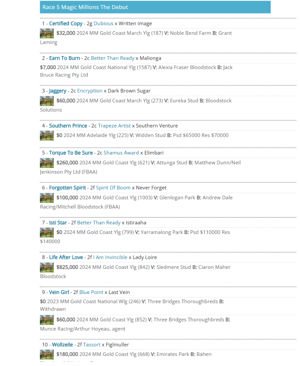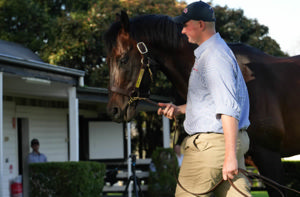Over the past few years we have continued to update the racing industry in relation to the ATO’s “Lifestyle Assets” data matching project, a project originally set-up in early 2016.
Another reminder - under this review the ATO will obtain information on insurance policies for certain “lifestyle assets”, with “thoroughbred racehorses” specifically noted within that asset class. Data will be sought from the insurers (refer updated list below) for racehorses insured for at least $65,000.
My last update was in June 2019, where we notified that the ATO had now extended data retention for this project to five years, whereas the original protocol noted only three years. Reading between the lines, this demonstrated to all and sundry as to the extent of the “success” and potential revenue raising the ATO were achieving with this audit.
However, this new five-year data retention period only related to the ATO data accessed for the original years under review, i.e. the 2014 and 2015 financial years.
If you thought just these two financial years would be the extent of this ATO review, and it was not going to include “lifestyle assets” held within a Self-Managed Superannuation Fund (SMSF), I urge you to read on...
Information now sought for an extra five financial years
In a shock ATO release of 18 December, the ATO have now escalated this data matching audit to also include accessing relevant insurance information for the 2016, 2017, 2018, 2019 and the current 2020 financial years. Do the sums, this is an extra 250% of information now being sought by them, i.e. two years of insurance policy information under review is now seven years.
Why does the ATO look at lifestyle assets
The latest release slightly modified what the ATO expect this lifestyle assets data-matching program to achieve in terms of identifying taxation risks, including:
- taxpayers accumulating or improving assets with insufficient income reported in their tax returns to show the financial means to pay for them;
- income tax and capital gains tax (CGT) – taxpayers disposing of assets and not declaring the revenue and/or capital gains on those disposals;
- goods and services tax (GST) – taxpayers may be purchasing assets for personal use through their business or related entities and claiming GST credits they are not entitled to;
- fringe benefits tax (FBT) – taxpayers may be purchasing assets through their business entities with no apparent nexus with their business activities, but rather applying those assets to the personal enjoyment of an associate or employee giving rise to a fringe benefits tax liability; and
- self-managed super funds (SMSFs) may be acquiring assets but applying them to the benefit of the fund's trustee or beneficiaries.
The inclusion above of SMSFs in this project was another development that very few saw coming, given the original focus was on individuals and, to a lesser extent, partnerships, trusts and companies.
Insurers providing data
This list has also grown (25 to 31) and changed since the initial project set-up, and currently data will be obtained from the following insurers:
- AAMI
- AIG
- Allianz
- Apia
- Bingle
- CGU Insurance
- Chubb Insurance
- Club Marine
- Coles Insurance
- CommInsure
- GIO
- Insuremyride
- Just Car Insurance
- Lumley
- Nautilus Marine
- NRMA
- QBE
- RAA Insurance
- RACQ
- RACV
- RAC Insurance
- Resilium
- SGIC
- SGIO
- Shannons
- Suncorp
- Swann Insurance
- Vero
- WFI
- Youi
- Zurich Australian Insurance
ATO warning – get your horse and other tax affairs in order
The ATO Small Business Deputy Commissioner is constantly quoted in the release and little was left to the imagination as to the ATO’s intent on this project. Consider some of her quotes below:
- “If a taxpayer is reporting a taxable income of $70,000 to us but we know they own a three-million-dollar yacht then this is likely to raise some red flags”
- “Doing things like being untruthful about your income or failing to declare capital gains is effectively stealing from the community – and this is money the community is missing out on to pay for infrastructure and services we all rely on like schools, hospitals, and roads.”
Though the insurance data in this program will not be used directly to initiate automatic compliance activity, the ATO will pursue taxpayers selected for its compliance activities identified, in their own words, “through other methodologies.” This is code for “if you have a racehorse insurance policy where its sum insured is at least $65,000, and our ATO compliance staff believe your tax affairs look suspect, expect us to dig further”.
Number of records being sought now 350,000 p.a. (was 100,000)
Within this latest release, the ATO noted that it anticipated obtaining records for more than 350,000 policies for each financial year, many of which will be held by individuals. Under the original scheme, it was 100,000.
Please contact me if you wish for me to clarify or expand on any of the matters raised in this article.
Paul Carrazzo CA
Carrazzo Consulting Pty Ltd
801 Glenferrie Road, Hawthorn, VIC, 3122
TEL: (03) 9982 1000
FAX: (03) 9329 8355
MOB: 0417 549 347
E-mail: paul.carrazzo@carrazzo.com.au
Web Site: www.carrazzo.com.au










